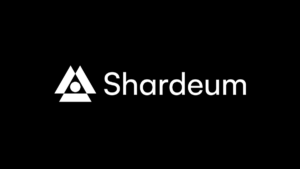
In the fast-paced developing world, the blockchain technology holds a pivotal space. As blockchain technology evolves tremendously in diverse fields like finance, business, education, medicine, and much more, the industry is embracing advancements. While Layer 1 forms the foundation of blockchain technology, Layer 2 and Layer 3 are the enhanced phases of the technology. This article presents a comprehensive analysis of the blockchain technology, delving deep into the Layer 1, Layer 2, and Layer 3.
What is Blockchain Technology?
Blockchain is a shared, decentralized, immutable ledger that allows the secure transfer and storage of information within a network. The technology is widely known and accepted mainly due to its features like speed, security, and transparency. Though blockchain is primarily used in the crypto industry for quick, safer, and cheaper transactions of cryptocurrencies, the technology could be integrated into multiple sectors. In recent years, blockchain technology has become popular in areas like business, finance, media, healthcare, banking, entertainment, etc.
Key Features of Blockchain
1. Scalability- Scalability is blockchain technology’s ability to support large-scale transactions and a large number of nodes in the network.
2. Security- As information is stored in an immutable decentralized ledger, blockchain poses the least possibility for the interference of a third person to hack or alter the data.
3. Speed- Blockchain transcends the long, time-consuming procedures of traditional financial transactions.
4. Decentralization- Blockchain is not governed by an entity, an individual, an institution, or even the government. It is decentralized, allowing no one to control or make changes to the stored information.
5. Transparency- Blockchain technology is built on the principle of transparency, prioritizing the security of users.
5. Smart Contracts- As blockchain functions on smart contracts, it restricts human interference, thus limiting the risk of human error.
Layer 1 Blockchain
Layer 1 blockchain is the foundation or the base layer of a blockchain. Being an underlying protocol, Layer 1 suffers from the “blockchain trilemma” as it is forced to sacrifice scalability, decentralization, or security. Some key examples of Layer 1 blockchain include Bitcoin, Ethereum, Solana, Cardano, Avalanche, Polkadot, Terra, Algorand, and Tron. As blockchains like Bitcoin and Ethereum choose decentralization and security over scalability, they are capable of faster transactions.
Layer 2 Blockchain
Layer 2 is built on top of the Layer 1 infrastructure to tackle scalability issues and increase transaction speed. Layer 2 also reduces transaction costs with advanced transaction facilities. They can take different forms, including state channels, sidechains, or rollups. Major examples of Layer 2 solutions are Polygon, Arbitrum, zkSync, etc.
State Channel
State channels include 2-way communication between 2 individual users or nodes in a network via smart contracts. It allows users to do micro-transactions between themselves, finally adding the concluded transaction details to the block. Key examples include Bitcoin’s Lightning Network, Ethereum’s Raiden Network, and the liquid network.
Sidechains
The Sidechain helps the blockchain speed up transactions despite its less decentralized form. Unlike the state channel’s private storage of data, the sidechain records data publically. The individual miners of the sidechain are responsible for their own security. Ethereum’s Plasma and Bitcoin’s liquid network are good examples of sidechains.
Rollups
Rollups move transactions away from the main blockchain to reduce transaction costs and increase throughput on the main chain. There are two types of Rollups- Optimistic and ZK rollups. In Optimistic rollups, a general assumption of valid transactions is set in default, with computation done only when fraud is suspected. Contrastingly, in ZK rollups, computation is made, and validity proofs are submitted to the main chain, as no assumptions are set. Polygon is a ZK rollup built on Ethereum.
Layer 3 Blockchain
Layer 3, hailed as the Application Layer, is the advanced layer built on the Layer 2 solutions. They are extremely scalable when compared to both Layer 1 and Layer 2. While the Layer 3 chain enables different blockchains to function together, it boasts lower fees. They support complex applications that can be used across multiple chains.
The advanced layer offers interoperability and application-customized functionalities. Thus, the Layer 3 chains are developed in favor of the user’s specific needs. For instance, Layer 2 blockchains host decentralized applications (dApps) and their protocols. While at present, most of the Layer 3 chains are built on Ethereum, blockchains such as Bitcoin do not have the capability of holding Layer 3. Yearn Finance, Dark Forest, and Uniswap Foundation are some of the dApps bulti on Ethereum.
In conclusion, in the advancing environment, the advancement of blockchains could be seen through the development of Layer 3, which brings together the features of both Layer 1 and Layer 2 and even more. However, each Layer plays a unique and crucial role in the blockchain ecosystem.














